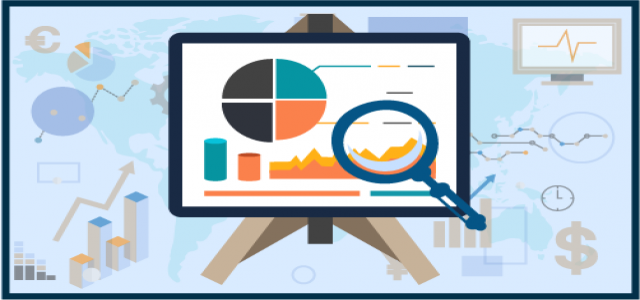
As per GMI, Inc. estimates, the global industrial sensors market size is expected to exceed $30 billion by 2027. Rising prominence of RPA (Robotic Process Automation) technology across the manufacturing sector will give the global industrial sensors industry share a substantial boost over the estimated timeline. The development of this technology has resulted in robust demand for automation equipment like programmable logic controllers and human-machine interface for use on assembly and production lines, hence impelling the deployment of industrial automation sensors.
Likewise, the availability of favorable government initiatives to automate food & beverage manufacturing will further escalate industrial sensors market expansion. In March 2021, the Australian Government announced $993 million in funds for the regional F&B makers under the MMI (Modern Manufacturing Initiative) scheme. These aforementioned factors, alongside the increasing penetration of industrial robots in the manufacturing and processing industries, will amplify the need for industrial sensors and controls over the coming years.
Get a sample copy of this research report @ https://www.decresearch.com/request-sample/detail/4271
According to the International Federation of Robotics, around 2 million units of industrial robots are likely to be installed in factories worldwide during 2020-2022.
Over the past years, the industry has been witnessing the widespread adoption of pressure sensors in HVAC applications, in an effort to help the systems function at optimum levels and enhance building maintenance. The integration of pressure technology in the HVAC systems allows them to optimize buildings’ heating, cooling, and airflow as well as lower power consumption in industrial facilities.
Furthermore, mounting integration of artificial intelligence, machine vision, and other advanced technologies into image sensor solutions, coupled with the rising implementation of IoT in the F&B, chemical, pharmaceuticals, and oil & gas sectors, are contributing factors to the industrial sensors market growth. However, the industry encountered massive challenges posed by the coronavirus pandemic in mid-2020, due to the strict lockdown measures, raw material shortage, manufacturing facility shutdown, and international trade restrictions.
On the basis of product, the force sensor segment accounted for over 8% of the industrial sensors market share in 2020 and is set to expand at a rapid pace over the foreseeable future. This is a result of its accelerating usage in measuring physical parameters including weight, torque, and mass of objects across the industrial sector. Myriad other benefits such as its capability to monitor loads and prevent overloading of industrial machinery will further boost segmental expansion.
With regards to the application spectrum, the mining segment accounted for a market share of over 7% in 2020 and is poised to depict a CAGR of 8% through 2027. This is attributable to the rising adoption of industrial gas sensors to examine safety parameters for various flammable and toxic gases under harsh mining conditions. The segmental growth will also be proliferated by the escalating mining and excavation activities in the APAC region.
Request for customization @ https://www.decresearch.com//roc/4271
Regionally, the Europe industrial sensors market held a 20% market share and is set to exhibit a CAGR of 7% through 2027, considering the robust presence of pharmaceutical companies such as Pfizer, which emphasize the mass production of novel drugs and vaccines.
The competitive landscape of the industrial sensors market comprises of companies such as NXP Semiconductors N.V., STMicroelectronics N.V., Sensirion AG, Analog Devices, Inc., TE Connectivity, Infineon Technologies, ams AG, Omron Corporation, and Honeywell International, Inc., among others.
Strategic product launches and M&A are among the key efforts being employed by these firms to sustain their position in the competitive global market. For instance, DD-Scientific unveiled a new range of high-performance, miniature electrochemical gas sensors in October 2020, facilitating the design of compact industrial instruments with greater functionality and reliability.
Rapid technological advancements and strong focus on automation across the industrial sectors have been offering a push to several markets including industrial sensors. The introduction of low wireless communication networks such as LPWAN (low power wide area networks) will extensively foster the development of wireless sensors and overall industrial IoT applications. This will, in turn, benefit the current remote working era and expedite the industrial sensors business landscape over the coming years.
Table of Contents (ToC) of the report:
Chapter 1 Methodology and Scope
1.1 Scope & definition
1.2 Methodology & forecast parameters
1.3 Data Sources
1.3.1 Secondary
1.3.2 Primary
Chapter 2 Executive Summary
2.1 Industrial sensors market 3600 synopsis, 2016 - 2027
2.1.1 Business trends
2.1.2 Regional trends
2.1.3 Product trends
2.1.4 Application trends
Browse complete Table of Contents (ToC) of this research report @ https://www.decresearch.com/toc/detail/industrial-sensors-market
About Us: –
DecResearch.com, powered by GMI, is an online aggregator of information on market research reports. The website provides comprehensive information as well as a detailed ‘Table of Contents’ for reports being regularly published by GMI. Via this platform, users not only get to answers to their questions about these reports, they also have an additional avenue to talk to the sales and research teams of GMI to learn more about the topics of their interest.
Contact Us: –
DecResearch.com
Website: – https://www.decresearch.com
Email: [email protected]
© 2025 groundalerts.com. All Rights Reserved.